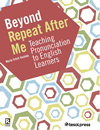The following activities are from New Ways in Teaching Reading, revised, edited by Richard R. Day.
Orally Summarizing
Contributed by Katie Leite
Level: High Beginning+
Aims: Help students identify main ideas from a text and productively use target vocabulary
Class Time: 10–15 minutes
Preparation Time: 10 minutes
Resources: Any story or chapter from a book that has pictures (children's picture books and graded readers will work well), photocopier
After students finish reading a story, they should be able to summarize the main events to demonstrate comprehension. In this activity, visual cues and a discussion phase provide scaffolding for students, enabling them to create richer summaries that incorporate more target vocabulary and exclude unimportant details.
PROCEDURE
-
Photocopy six to eight pictures from the story that represent the main events.
-
Arrange the pictures in chronological order and under each picture write two to three target vocabulary words. If large enough, the pictures can be put on a poster board and displayed at the front of the room; for smaller pictures, put them on a handout for each group of students.
-
Put students in pairs and give half of the class pairs (A groups) the first three to four pictures, and the other half of the class pairs (B groups), the second three to four pictures. Tell students to discuss what is occurring in the pictures and try to use the vocabulary words in their discussion.
-
Reshuffle the students into new pairs made up of one A student and one B student. The A student should orally summarize the first half of the story, and the B student should listen and write down each vocabulary word as he or she hears it being used during the summary. The students should switch roles for the second half of the story, and the B student should orally summarize, while the A student listens and writes.
Download this activity (PDF)
Reading Around the Room
Contributed by Aubery Olsen Bronson
Level: Beginning
Aims
- Increase phonological awareness
- Help students isolate initial sounds
Class Time: 5–10 minutes
Preparation Time: 15–20 minutes
Resources: Labels for objects in the classroom, pointer sticks
When reading with young children, teachers often use pointer sticks to call attention to each word as it is read. Young learners enjoy using pointer sticks to find and read labels around the classroom. For beginners, finding labels on familiar objects helps them to improve their phonological awareness and notice the letters for initial sounds.
PROCEDURE
-
Write or print out labels and attach them to objects in the classroom.
-
Demonstrate appropriate use of pointer sticks for pointing to the labels and reading the words.
-
Allow the students to read around the room by pointing to the different labels and reading the words aloud.
CAVEATS AND OPTIONS
-
If you want the students to focus on a particular sound or sounds, you can mark the pointer sticks with different letters and send the students on a treasure hunt searching for words that begin with that letter. When students are holding D pointer sticks, they should find and read the labels for door, desk, drawer, and so forth. When students are holding M pointer sticks, they should point to and read the labels for mirror, marker, map, and so forth.
-
You might want to begin with words that are easy to recognize because of the item they represent. As students progress, you can add labels to the classroom that are more challenging. As you add each new set of labels, use a different color of paper. This will allow you to give instructions such as, Now, use your pointer stick to read all of the yellow labels in the classroom.
-
Another option is to put the students in pairs and give them a checklist of labels to find. As they find each item, they can make a checkmark in the corresponding box.
Download this activity (PDF)
|
Purchase New Ways in Teaching Reading, revised at the TESOL Bookstore |
These activities may be reproduced for educational purposes only.
© TESOL International Association.
| Next Article |

